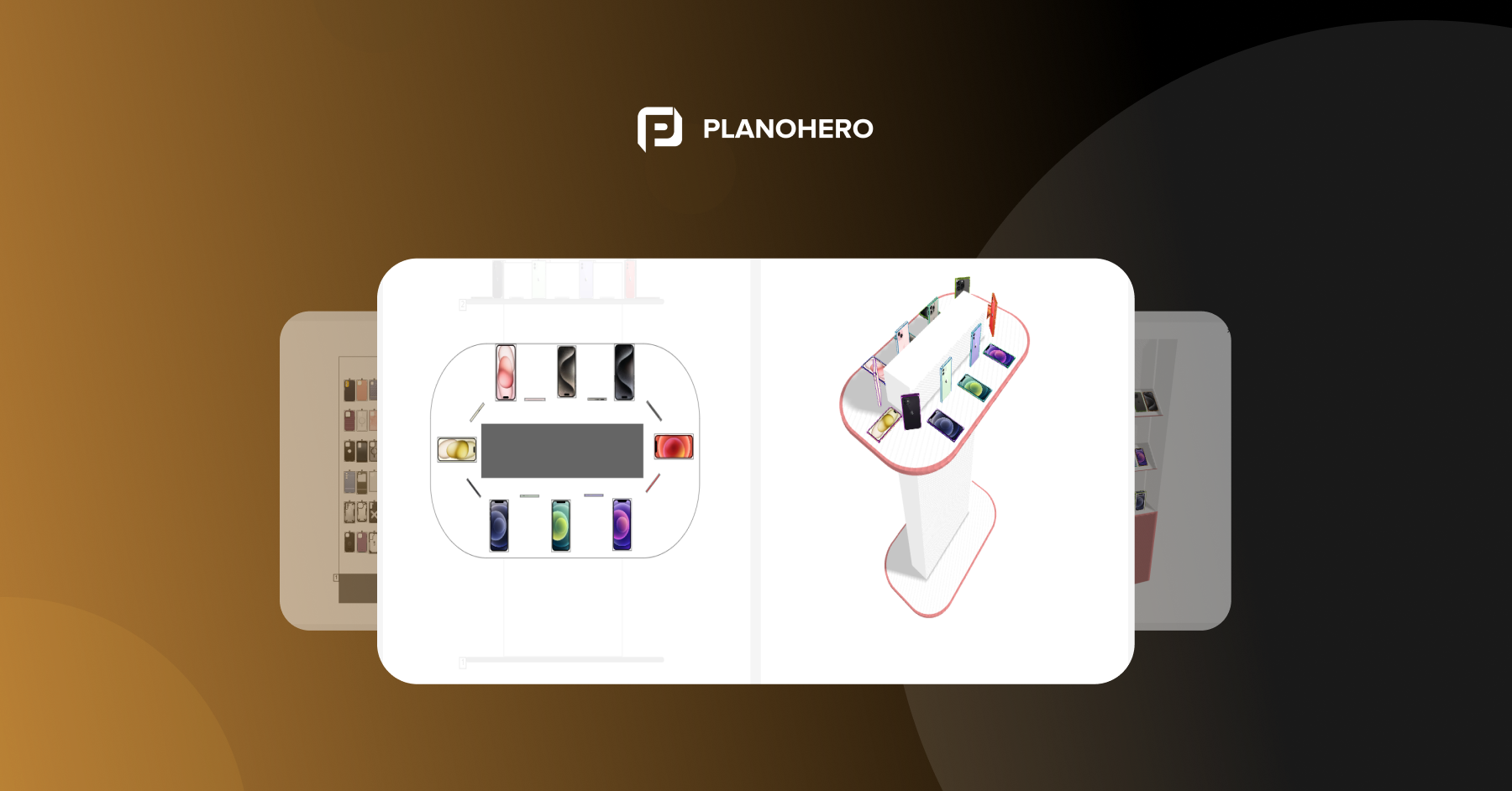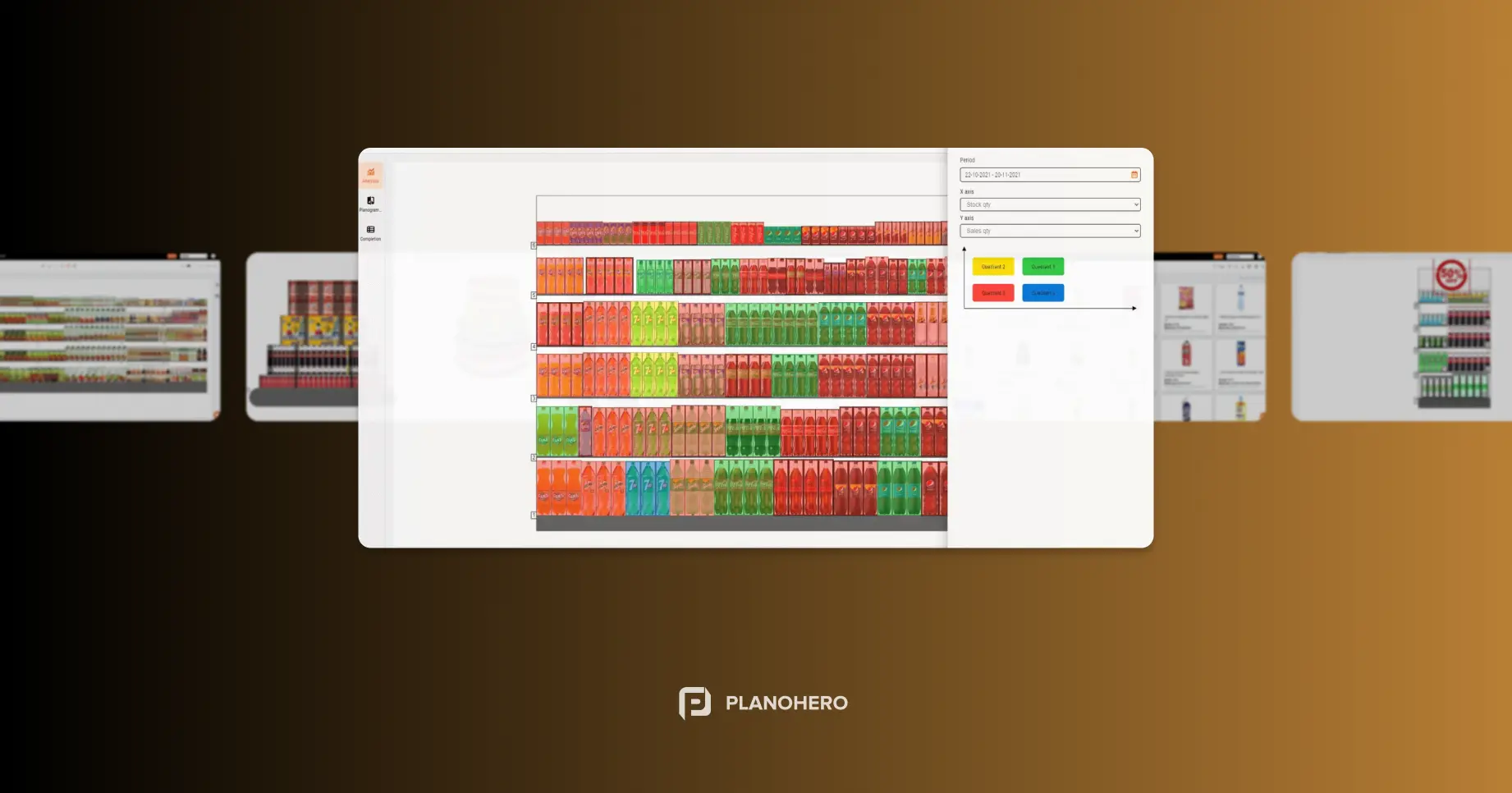Zarządzanie kategoriami to proces zarządzania asortymentem produktów jako kategoriami produktów. Chodzi o zarządzanie kategoriami, analizowanie i grupowanie ich w sposób, w jaki kupujący definiuje je dla siebie. Jest to proces grupowania powiązanych produktów w logiczne grupy.
Często kupujący „grupuje” towary w swoim umyśle inaczej niż marketer, producent lub nabywca.
Kupujący często nie myśli o markach, ale o kategoriach. Mleko, chleb i przekąski nie są już konkretnymi produktami, ale kategorią towarową.
Jak zarządzać kategorią?
- zdefiniuj kategorie w asortymencie towarów;
- wybierz kategorie z określonych rodzajów towarów;
- zdefiniuj zadania w procesie zarządzania kategorią;
- monitoruj i analizuj sprzedaż kategorii;
- wykorzystuj dane produktowe do inteligentnego zarządzania kategoriami podczas tworzenia planogramów.
Jakich danych potrzebujesz?
Kod produktu, kod kreskowy, opis, marka i informacje o dostawcy w celu identyfikacji produktów na planogramie. Pomoże to z zyskiem sprzedawać najlepsze produkty w kategorii.
Konieczne jest również dostarczenie i dołączenie prawidłowych zdjęć i wymiarów do produktów w celu skutecznego umieszczenia produktów na planogramie.
Dane dotyczące sprzedaży, jednostek i zysku brutto są ważne. Dane dotyczące sprzedaży wpływają na sposób tworzenia i używania kategorii w planogramach.
Na tworzenie kategorii ma również wpływ sposób, w jaki konsumenci kupują określone produkty i czy mogą znaleźć to, czego potrzebują.
Jeśli nie wykorzystasz tych danych do zbudowania planogramu, trudno będzie określić lokalizację konkretnej kategorii produktów i stworzyć planogramy, które zwiększą sprzedaż.
Klienci, którzy nie mogą znaleźć w sklepie tego, czego szukają, nie będą chcieli kontynuować zakupów.
Korzystaj z zasad merchandisingu ustalonych dla Twoich sklepów.
Każdy sklep ma swój własny zestaw zasad merchandisingu. Tylko Ty wiesz, co działa w Twojej sieci i jakie są potrzeby Twoich klientów.
Kluczowe zasady zarządzania kategoriami dla planowania asortymentu
1. Klasyfikacje kategorii muszą być aktualne i spójne z hierarchią.
Klasyfikacja produktów jest bezpośrednim odzwierciedleniem hierarchii wyświetlania, a także sposobu, w jaki klient wybiera kategorię.
Nieprawidłowa kategoryzacja może prowadzić do niewłaściwej sprzedaży w niewłaściwych kategoriach. Spowoduje to zniekształcenie danych wykorzystywanych do tworzenia planogramów.
Klasyfikacje pomagają twórcom planów asortymentowych zidentyfikować podobne pozycje w procesie rankingu. Sprawdzanie postępów i aktualizacja klasyfikacji to pierwsze kroki w procesie planowania asortymentu. Klasyfikacje zapewniają, że wszystkie produkty mają właściwe miejsce w tym systemie hierarchii. Ilustruje to drzewo decyzyjne konsumenta, które wpływa na sposób klasyfikowania i konstruowania planogramów.
Podczas kategoryzacji produktów należy upewnić się, że wszystkie poziomy hierarchii zostały ukończone, od działu do kategorii, podkategorii, segmentu i marki.
Analityk asortymentu użyje poziomów hierarchii, aby upewnić się, że ranking na wszystkich poziomach jest poprawnie wypełniony. Menedżer kategorii zadba o prawidłowe umieszczenie produktów w swojej kategorii zgodnie z różnymi poziomami hierarchii.
2. Konieczne jest zdefiniowanie marki i profilu sklepu
Profilowanie marki jest związane z ceną sprzedaży detalicznej marki dla produktów w kategorii. Na przykład droższe marki będą premium; marki w średnim przedziale cenowym będą w średnim przedziale cenowym, podczas gdy tańsze produkty będą w niższym przedziale cenowym.
Zdefiniowanie profilu marki pomaga wybrać odpowiednią gamę produktów dla właściwego klastra lub sklepów. Na przykład, jeśli głównymi klientami sklepów są osoby o wysokich dochodach, sklep może być sklepem premium i, w oparciu o średnie wydatki, mieszać 50% marek premium i 50% marek ze średniej półki.
Definiując profil sklepu, można upewnić się, że sprzedaje się właściwy asortyment produktów na właściwym rynku docelowym. Pomoże to zaoferować klientom odpowiednie produkty w odpowiedniej cenie.
Profile sklepów pomagają również identyfikować klastry na podstawie tego, co można uznać za poziom sklepu (ekonomiczny, średniej klasy, premium).
Należy upewnić się, że działy w sklepie są prawidłowe i spójne. W tym miejscu należy zastanowić się, jaką ścieżkę obiorą kupujący na parkiecie. Tak, aby nie tylko łatwo znaleźli odpowiedni produkt, ale także zachęcili go do dodatkowych zakupów.
Możesz dodać kategorie, które do siebie pasują. Na przykład, spróbuj umieścić produkty mleczne obok płatków śniadaniowych, ponieważ są one często kupowane razem. Zachęcaj także kupujących do robienia zakupów po obu stronach alejki, umieszczając powiązane kategorie obok siebie.
Zastosowanie właściwych zasad zarządzania kategoriami zapewni optymalne doświadczenie w zarządzaniu i ostatecznie doprowadzi do udanego środowiska sprzedaży detalicznej.
Twórz kategorie, które są zrozumiałe dla klientów i sposobu, w jaki robią zakupy w Twoim sklepie.
Szukasz oprogramowania tworzenia planogramów?
Wypróbuj bezpłatną wersję demonstracyjną PlanoHero




